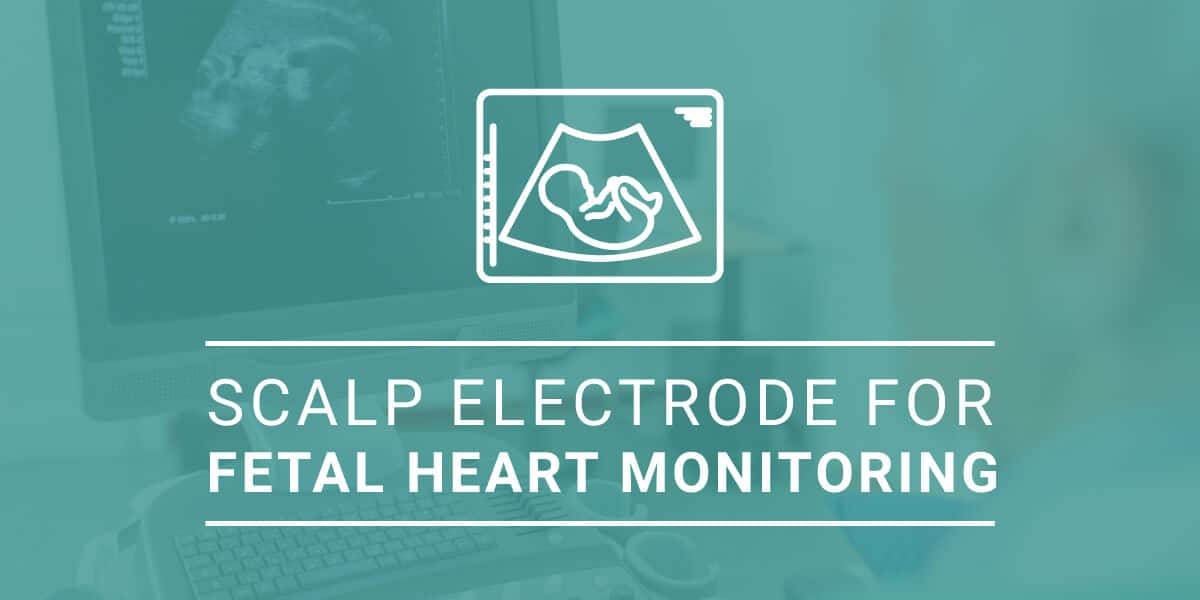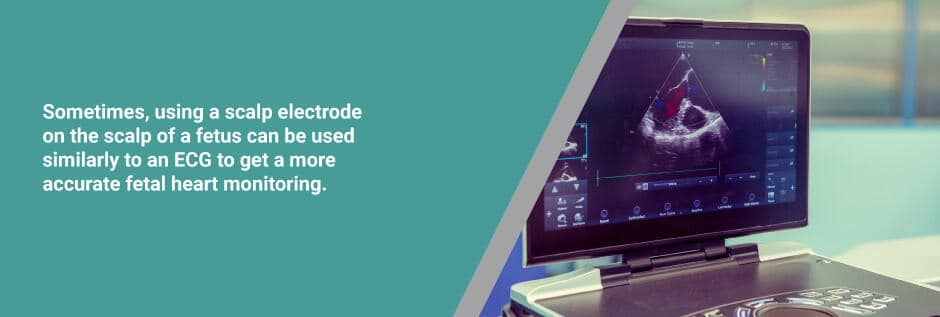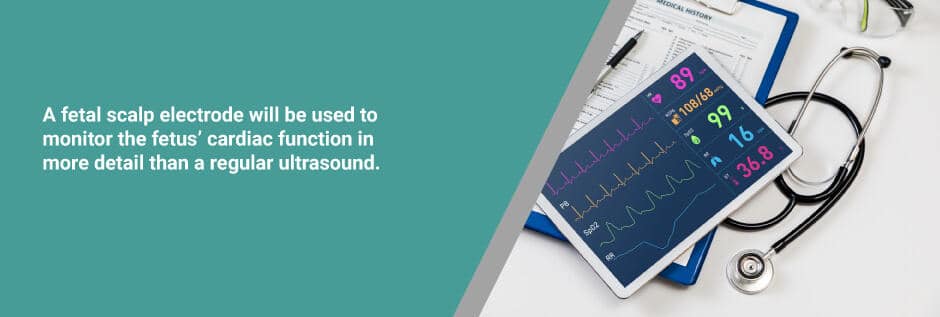
Main Takeaways:
- A scalp electrode is applied to a fetus’ scalp which monitors the baby’s heart, similar to an ECG
- A scalp electrode monitors a fetus’ heart rate more accurately than an external monitoring method for a variety of reasons.
- Internal methods of heart monitoring are only of use after membranes have ruptured and when there are no other contra-indications
Monitoring of the fetal heart rate during labor has been available to mothers in labor since the 1960s. Physicians and nurses are trained to identify fetuses at risk for complications during labor and delivery and to take whatever steps are necessary to advise the mother of the reasonable treatment options and interventions available to protect her and her baby.
Scalp Electrode Alternative
Frequently, an external monitoring process that uses Doppler ultrasound is used to “listen” to the fetal heart and monitor and record the fetal heart rate. However, in some situations, it is appropriate to use a process which involves applying a scalp electrode to the scalp of the fetus which provides monitoring of the fetal heart, which is similar to an ECG.
Using the internal monitoring method with the fetal scalp electrode is useful where monitoring of the fetal heart is required but other monitoring methods are unreliable or unsatisfactory. The caregivers may feel that obtaining a fetal heart “tracing” or a record of the fetal heart rate is not accurate and for a variety of reasons, the external monitor is not providing a reliable tracing. Sometimes babies “hide” and make it difficult to pick up the fetal heart rate, and the tracing actually may document the heart rate of the mother, which is usually much lower than a normal fetus.
This happens most often while the mother is in the second stage of labor – i.e., “pushing,” and the baby is in the birth canal and the ultrasound cannot pick up the heartbeat through the bones. The lack of a reliable fetal heart tracing using the external monitor may make the use of an internal fetal scalp electrode an appropriate and recommended option.
Scalp Electrode and Longer Heart Rate Record
The fetal scalp electrode allows a more continuous record of the fetal heart rate, which may be desirable where there is a concern about the well being of the fetus. Sometimes, even when the Doppler ultrasound can pick up the fetus’ heart rate, a fetal scalp electrode will be used to monitor the fetus’ cardiac function in more detail.
However, according to the World Health Organization Reproductive Health Library (RHO), there were 12 studies conducted of over 30,000 pregnant women. Of those studies, pregnant women who experienced continuous electronic fetal monitoring were at least 1.7 times more likely to undergo a C-section when compared with those in the intermittent EFM studies, so it is important to know that there is risk involved in using electronic fetal monitoring.
The internal monitoring method is only available after the membranes have ruptured and where there are no other contraindications (such as HIV in the mother or other higher-risk situations). In some instances, caregivers may recommend artificial rupture of the membranes in order to make use of internal monitoring with a fetal scalp electrode.
Contact a Trusted Birth Injury Lawyer Today
In many of BILA’s cases, injuries suffered by a newborn from Electronic Fetal Monitoring could have been avoided entirely with the appropriate clinical response. If you believe a medical professional acted incorrectly with an electronic fetal monitor, contact one of our trusted lawyers today.

Susanne Raab is a lawyer at Pacific Medical Law, and an advocate for people living with disabilities. She has been selected for inclusion by her peers in Best Lawyers in Canada in the area of Medical Negligence and is recognized as a leading practitioner in the Canadian Legal Lexpert® Directory in medical malpractice. Susanne is also a Fellow of the Litigation Counsel of America, an honorary trial lawyer society whose membership is limited to less than one-half of one percent of North American lawyers, judges and scholars.




